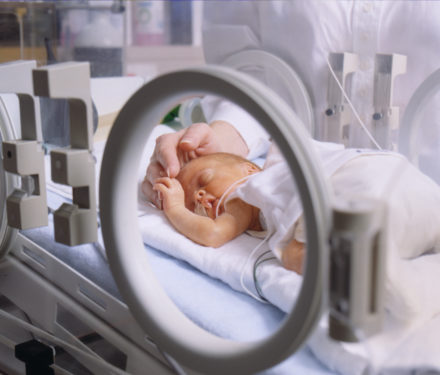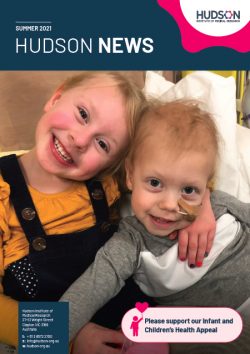A naturally occurring sleep hormone could be a game-changer for protecting newborn babies from brain damage caused by oxygen deprivation at birth.
Hudson Institute is paving the way for a new treatment that could transform the way babies starved of oxygen at birth are treated worldwide.
Oxygen deprivation at childbirth, or birth asphyxia, kills one million babies globally each year. This severe lack of oxygen may go on to cause a condition known as neonatal encephalopathy (NE), causing conditions including cerebral palsy and intellectual disability.
In Australia, the current treatment for NE is therapeutic hypothermia or whole-body cooling, which slows the body down to allow it time to heal. Sadly, a quarter of these babies will die despite cooling, and another quarter will survive – but go on to live with life-long disability.
Professor Suzanne Miller and her team have spent the past decade working to understand the brain injury that occurs following birth asphyxia. Now, their work is paving the way for treatments that will transform the way babies starved of oxygen are treated at birth.
In a new pre-clinical study published in the Journal of Pineal Research, the team have discovered that combining hypothermia with the antioxidant melatonin provided significantly greater recovery from NE.
Prof Miller explains, “Often, we will never know the cause of the lack of oxygen to a baby, so finding an effective treatment after birth is crucial for providing babies and families with a better chance of life or life without disability.”
Homing in on free radicals
Hypothermia as a treatment for NE reduces the risk of death or disability by around 30 per cent, but hypothermia alone is not sufficient. Scientists know that asphyxia at birth causes an influx of oxygen-damaging free radicals. Hudson Institute scientists are targeting those free radicals with the powerful antioxidant, melatonin.
“Melatonin has potent antioxidant and anti-inflammatory properties to fight against damaging free radicals, and here we showed that it significantly enhances brain protection of therapeutic hypothermia,” Prof Miller said.
Associate Professor Atul Malhotra, study co-author and neonatologist at Monash Children’s Hospital, says the results lay the foundation for a combined treatment, which has strong implications for reducing neonatal death and disability.
A/Prof Malhotra, who collaborates with colleagues in low- and middle-income countries including rural India, hopes melatonin therapy alone may be beneficial in settings where cooling is not available.
International clinical trial
With such positive pre-clinical results, Prof Miller’s team is seeking funding to begin an international clinical trial, collaborating with teams in the UK and New Zealand.
What is the role of melatonin?
Asphyxia at birth causes a large influx of oxygen-damaging free radicals and inflammatory cells that wreak havoc on the brain.
While melatonin is best known for its role in driving the body’s sleep and wake cycle, it is also a powerful antioxidant and anti-inflammatory and a proven safe and feasible treatment.
Melatonin helps to ‘re-balance’ the scales and provides the body with the ability to fight against these damaging products.
Collaborators | Monash University, Monash Children’s Hospital, Murdoch Children’s Research Institute, University of Auckland.
Funders | NHMRC, Bill and Melinda Gates Foundation.
-
Previous
Lachy’s story


